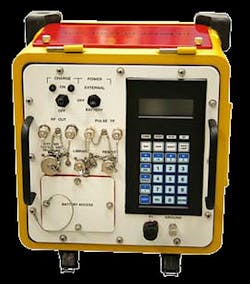Navy looks to Exelis for avionics test systems for MH-60R and S-70B maritime helicopters
LAKEHURST, N.J., 22 Nov. 2013. U.S. Navy helicopter avionics experts needed radar signal simulators for the MH-60R and S-70B Seahawk maritime helicopters. They found their solution from Exelis Inc. in Fort Wayne, Ind.
Officials of the Naval Air Warfare Center Aircraft Division in Lakehurst, N.J., announced a $7 million contract to Exelis on Wednesday for as many as 62 avionics radar signal simulators, which are for test & measurement of helicopter radar warning receivers, electronic surveillance measures, and electronic countermeasures systems.
Of these 62 radar signal simulators, 33 are for the U.S. Navy, 27 are for the government of Australia, and two are for the government of Brazil. The Australian and Brazilian sales are part of the Pentagon's Foreign Military Sales (FMS) program.
Exelis designs the AN/PLM-4 radar signal simulator (RSS). Some of these devices also are able to test helicopter missile warning systems. The PLM-4 is a user-programmable test set that generates pulse and scan modulated radio frequency (RF) signals for testing electronics systems on helicopters and fixed-wing aircraft, as well as for surface ships and submarines.
The PLM-4 is designed to test the detection and identification capabilities of aircraft, surface ships, submarines, and land vehicles against hostile threats. Using internal antennas, the radar signal simulator radiates toward the system under test to enable the user to evaluate the unit's operation or perform diagnostics.
The Exelis PLM-4 is self-contained and operates from internal batteries or external AC power. It’s small size enables one person to hand carry and operate it.
The RSS can be used for testing pods, on-board self-protection electronic countermeasures systems, radar warning receiver (RWR) systems and electronic warfare support measures (ESM) systems.
With the RSS remote terminal, the user can sit in the aircraft under test while he works. The remote terminal allows the user to control the functions of the unit. The PLM-4 also can connect avionics systems for testing and troubleshooting if the operator wants to bypass the antennas.
The PLM-4 has a built-in or external battery charger, and can be used remotely as far away from the test aircraft as 1,000 feet. The unit measures about one cubic foot, and weighs 20 pounds.
The unit's frequency range is 500 MHz to 18 GHz, with options to 40 GHz, with pulse repetition interval types: jitter, stagger and guidance triplets. It runs on universal AC power, auto-switching AC input, or on two removable lithium-ion batteries. The unit operates in temperatures from -40 to 55 degrees Celsius.
On this contract, Exelis will do the work in Fort Wayne, Ind., and should be finished by November 2017. For more information contact Exelis Inc. online at www.exelisinc.com, or the Air Warfare Center Aircraft Division Lakehurst at www.navair.navy.mil.

